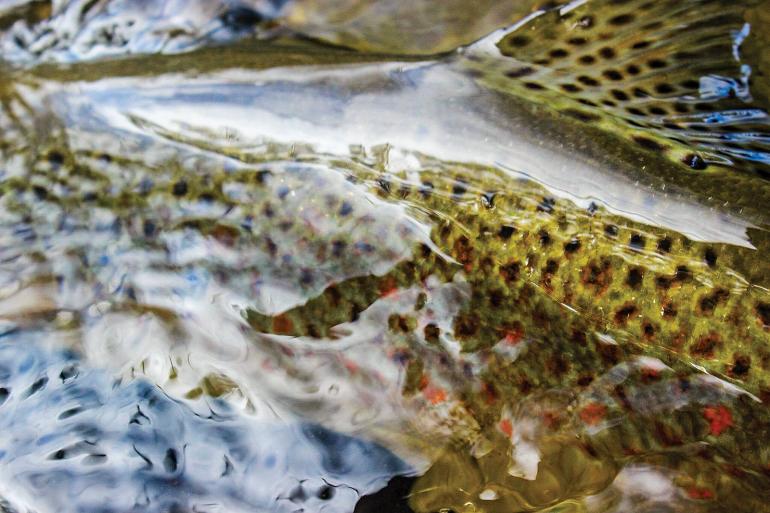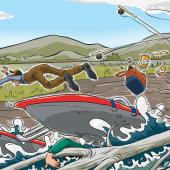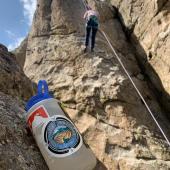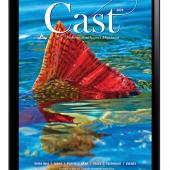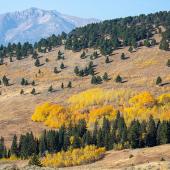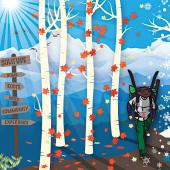Health Benefits
Fishing responsibly in hot weather.
Montana summers are a lot hotter than they used to be. High water temps lead to reduced oxygen in the water, and pressure from fishing adds a lot of stress, compounding the effect on fish mortality. As we experience near-record low flows and ever-increasing water temps, it’s more important than ever that we follow some basic guidelines to keep our fish healthy.
One of the most important things to keep in mind is water temperature. Below 65 degrees, trout are happy and healthy, and you’ve got nothing to worry about. From 65-68 degrees, you should exercise caution. Fish early in the day when water temps are at their lowest and follow the recommendations below to help minimize your impact on the fishery. Above 68 degrees, it’s time to think about something else to do.
Conservation comes down to a personal choice.
Look for real-time updates on water temps on usgs.com. Search for the river you’ll be fishing and you should be able to find gauges based on where you’re going. When water temps rise above 72 degrees for three consecutive days, Montana Fish, Wildlife & Parks will step in with a “hoot-owl” restriction. This means no fishing from 2pm to midnight each day.
Barbless Hooks
This is a very easy solution to an ongoing problem. Fishing barbless hooks makes it easier to remove your fly from the fish. This reduces handling time and gets the fish back in the water that much faster. Barbs can often get hung up on a trout’s mouth and cause additional damage during the removal. Barbless hooks don’t have this problem.
More and more commercially tied flies are coming barbless. If your flies still have the barbs on them, consider pinching them down. Simply use the smooth portion on the jaws of your forceps to gently crimp the barb to flat.
Remember, barbless hooks are required in places like Yellowstone Park. While they aren’t required on most rivers in Montana, pinching your barbs is a good habit to get into. And, as we like to say, barbless hooks are “easy on the fish and the fisherman,” if by chance an errant cast should put a fly in your arm, or elsewhere.
Landing Fish Efficiently
Another key factor in keeping fish healthy is landing them quickly. When the water is warm, a good rule of thumb is to use a heavier tippet than you normally would. This will let you fight the fish quickly and get them into the net much faster than if you are worried about breaking a delicate 5x or 6x. The heavier tippet also balances well with larger flies typically fished later in the summer like chubbies and hoppers.
During the heat of summer, it’s not about “the fight.” Don’t try to play the fish, don’t try to “let them run,” don’t try to see how sporty they are. Just get them to the net as quickly as you can without breaking them off. Once that fish eats your fly, the countdown starts. Get them in, unhooked, and released before their time runs out.
High summer is not the time for the classic grip-and-grin shots.
A good landing net is important for proper fish handling. It’s easier than trying to scoop the fish up with your hands and can make the landing process faster. Get a net with rubber mesh. Fabric nets can dig into the fish and damage their protective slime layer.
Keep ’Em Wet
It’s extremely important to keep fish in the water once you land them. Using your net, keep the fish submerged while you remove the hook. Always take your gloves off, and dip your hands in the water to wet them, before picking up or handling fish. Never put fish on a grassy bank or bankside rocks.
If you do want to get a picture of your fish, get it quickly and while the fish is in the water. High summer is not the time for the classic grip-and-grin shots. Get creative with camera angles and framing if you really want a photo, or just skip the picture and savor it as a memory. If you do have to lift the fish from the water, make sure everything is set before taking the fish out, and hold it no more than a foot above the water.
Never Pose Over the Boat
Why is posing for a photo with a fish over a boat a bad idea? First, it keeps the fish out of the water for a significant amount of time. Every second counts, and it often takes too long to unhook the fish, position everyone, get a couple of shots, and then try to get the fish back in the water. Generally, a fish is out of the water for this entire process.
Second, have you ever held a trout? Even exhausted from trying to survive in high-water temps, they have a lot of fight in them. Everyone who has ever tried to hold one has dropped it. If you drop a fish over water, it falls in the river and nothing bad happens. Drop one in a drift boat or raft and it’s bonking into coolers, flopping on the floor, hitting the frame, sliding under things, getting coated in sand and dirt... holding a fish over a boat is just a bad deal. Don’t do it.
In the past, we typically didn’t see these high-water temps and low flows until late August, but they’re coming earlier every year. We need to be responsible, obey regulations when closures do happen, and be smart. Conservation comes down to a personal choice. The health and future of the fishery is truly in your hands, every time you step in the water.
A version of this article originally appeared as a blog for Dan Bailey’s Outdoor Company.


